Urban Landscape Photography Tips
Urban Landscape Photography involves capturing the buildings and structures in our towns and cities. Because most of us live in towns or cities, it is a much closer subject to deal with than traveling out to the countryside for some traditional landscape photography.
Although photographing gray concrete buildings might not sound appealing compared to being out in the country, urban landscape photography can produce some fantastic photos.
Time of day
As with landscape photography, the time of day you are taking your photos is important. However, you don't need to restrict yourself to the golden hours of sunrise and sunset for urban landscape photography. Rather, the time of day that you shoot should be dictated by your subject.
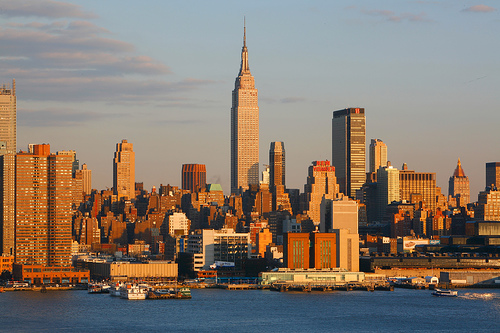
Manhattan Sunset Dream #3 by aturkus on flickr (licensed CC-BY) - Taking the photo when the sun was lighting the fronts of the buildings but not the sides gives this photo a good sense of depth
You want to look at the lighting and shadows on your subject(s) to determine when the best time to photograph them is. With buildings on different streets facing in different directions, one set of buildings may have the best lighting at 12 noon, while another may look better at 3pm in the afternoon.
As you walk around you should make notes on possible locations for a good photo, and what sort of time they are likely to look best. Don't forget also, that the actual landscape will change with time e.g. signs outside shops will only be there during opening hours, flats with washing hanging across the balconies won't have the washing hanging there all day.
Patterns and shapes
With the way buildings are constructed in regular, uniform way, it can be quite easy to find patterns to include in your compositions.
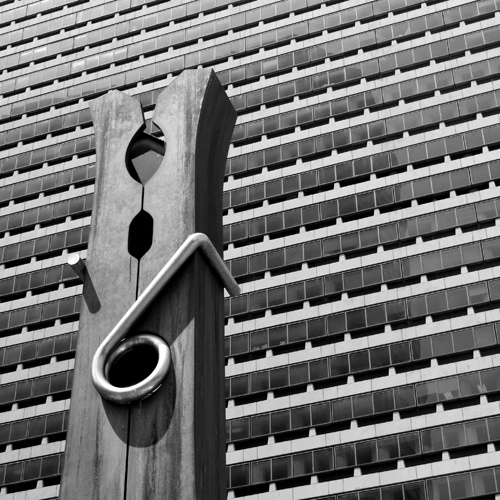
It's the building that's miniature: Philadelphia's Clothespin by Jack Wolgin by kevin dooley on flickr (licensed CC-BY)
Although you're unlikely to find a circular shaped building, some builings are created with curves, while others are very flat and angular. Use the lines of the building edges in your photos as part of the composition.
In the photo below the wavy building acts a converging line to draw your attention towards the center of the photo. The buildings all meet at a point around the bottom right of the image, as per the rule of thirds.
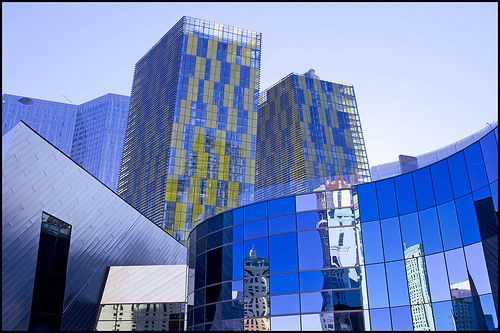
Las Vegas by Bert Kaufmann on flickr (licensed CC-BY)
Juxtapositions & Contrasts
Look for contrasts between shape, color, size, age, well kept buildings and run down buildings, architectural styles, etc. These contrasts can be found quite easily in most cities.
A good example of color contrast could be one brightly painted building amongst a group of much more drab colored buildings. Or the warm early morning / late afternoon light on a brick building compared to the cool blue sky reflected from a glass and steel building.
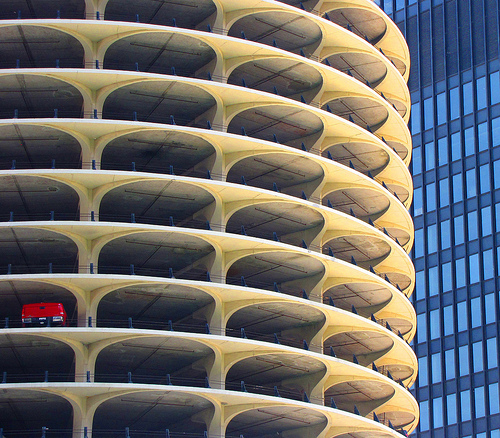
Marina City, Chicago. One-car garage. by o palsson on flickr (licensed CC-BY)
Buildings of different ages and architectural styles make a good contrast. You are more likely to find these in cities with a long heritage than new towns, but even in a new town there may well be buildings built in contrasting styles right next to each other.
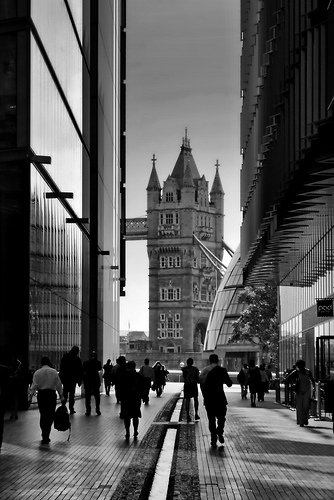
Old and New London by Jayt74 on flickr (licensed CC-BY-SA)
People
The majority of urban landscape photos tend not to include people. This is because it is easy for the people to become the subject rather than the landscape.
Of course, not every urban landscape photo is devoid of people. If the inclusion of people adds to the shot, or at least does not detract from it, there is no harm in including them.
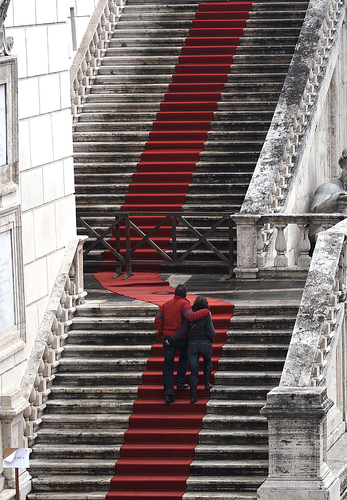
Urban paths by Gianni Dominici on flickr (licensed CC-BY-ND)
If you do have a scene where you think it would be better without the people, you could try coming back at a time when you think it will be less busy. Another solution is to use a very slow shutter speed. Shooting at night, or using a strong neutral density filter can allow this. With a slow shutter speed, moving people blur away into nothingness.
Don't pack up at night
Although it can be tempting to pack up when the light starts to wane, urban landscapes can look great at night. Unlike natural landscapes, where you only have the light of the moon and stars, urban landscapes are filled with artifical light. The lighting in towns and cities is often numerous colors as tungsten, flourescent, and neon lights clash together.
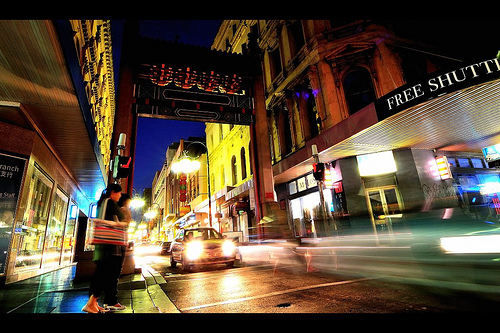
chinatown rush by mugley on flickr (licensed CC-BY-SA)
Shooting at night is particularly good on wet days, where you can get some great reflections on wet roads and surfaces. Depending on where you are shooting, you will probably want to use a tripod or monopod to steady the camera. If you're shooting in a busy area, bear in mind that a tripod might get in people's way too much.
Reflections
With the heavy use of glass in buildings, there are reflective surfaces all around you. There are a few different ways reflections can be used:
Shooting into a reflective surface, and capturing part of the reflection, and part of the building
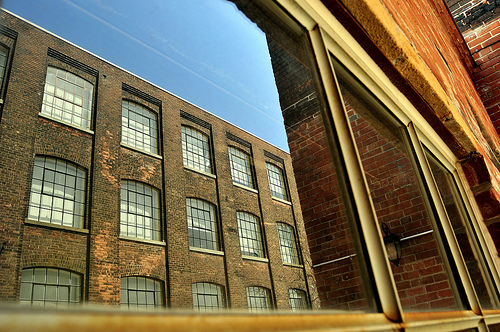
WINDOW REFLECTION by marc falardeau on flickr (licensed CC-BY)Capturing the sky and clouds reflected on large office blocks
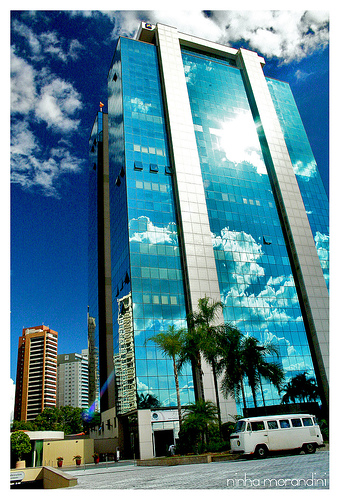
Contradiction by Ninha Morandini on flickr (licensed CC-BY-ND)Buildings by water reflected in the water below. The traditional shot is of buildings at night with their lights on reflected in the water, but daytime shots can work very well too.

in the evening twilight by OiMax on flickr (licensed CC-BY)
I hope this article has given you some tips and ideas on urban landscape photography. Many of the same compositional guidelines apply to both natural and urban landscape photography, e.g. using leading lines, the rule of thirds, etc. But urban landscape photography is much more convenient for many of us. Perhaps you could practice by taking a few shots on your way to work and back, or while you're out shopping?




